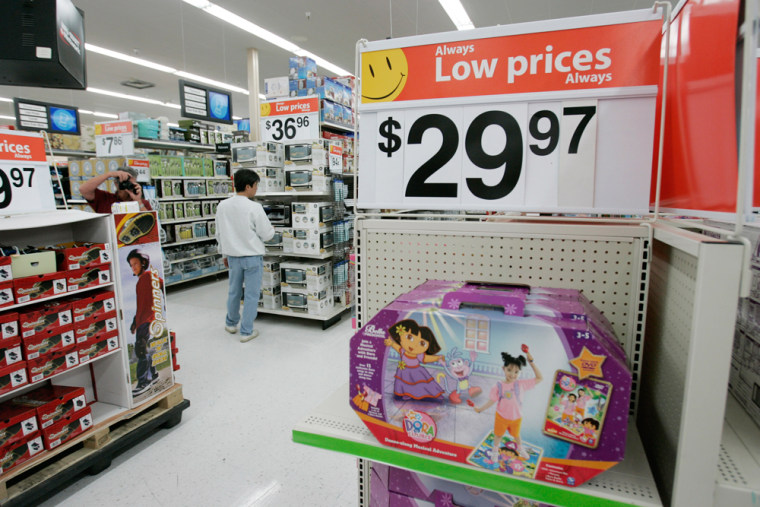It may surprise — or even infuriate — critics, but a new study finds Wal-Mart benefits rather than harms the American economy.
That's the conclusion of a report just released by the Federal Reserve Bank of Minneapolis, which studied the "Wal-Mart effect" for 89 counties in its region over the past two decades. The study shows that between 1985 and 2003, personal income, overall employment and retail employment grew faster in counties with a Wal-Mart than in those without one.
Surprised? Don't be. Just acknowledge that Adam Smith was probably right: An exchange of goods at low prices benefits everyone. In the case of Wal-Mart, it seems evident that its model of low prices brings more choice to consumers, which is why so many choose to shop there.
While it is widely (or maybe not so widely) believed that Wal-Mart wipes out local jobs and depresses wages, "the findings suggest the opposite: Firm growth, employment and total earnings were somewhat stronger in Wal-Mart counties," the report says. Still, according to a Pew study cited by the report, 24 percent of Americans think the company is bad for the economy, and 31 percent had an unfavorable view of it.
Yet Wal-Mart accounts for almost 6 percent of retail and food sales in the U.S. — 7.5 percent if you include car sales, according to the report. Among those living near a Wal-Mart, the Pew study found 81 percent said it was a good place to shop. Five out of six Americans shopped at the stores in 2005. Nearly 90 percent of the U.S. population lives within 15 miles of a Wal-Mart store, and two-thirds of all retailers are located within five miles of one, the Fed's report says.
The retail behemoth, which grew to dominance through a strategy of serving lower- to middle-income customers, is one of the greatest success stories in American business history. Some economists give more credit to the company than to Alan Greenspan for the low inflation of the past 20 years, given how greatly its low-cost model has rippled through the industry and the economy.
"Wal-Mart has been at the forefront of the productivity boom," says Ohio University professor Richard Vedder, author of the book The Wal-Mart Revolution. Retail, historically a sleepy industry that has lagged the productivity curve, was basically slapped into shape during Wal-Mart's march to dominance in the 1980s.
The result: an awakened industry that's had to work harder than ever to serve consumers at lower prices.
In his book, Vedder cites Bureau of Labor Statistics showing that Wal-Mart's wages lag the retail-industry average by just a small margin, an expected result given that the bulk of its stores are located in low-income areas. There's also no proof that company managers have discriminated against employees at a greater rate than anywhere else. And about 90 percent of Wal-Mart workers are covered by a health plan, either through the company or a spouse's plan. Again, that's in line with the industry average.
The Minneapolis Fed doesn't claim that Wal-Mart is a boon to every local economy it touches, just that its advantages outweigh its disadvantages. By now, at least that much should have been obvious.
